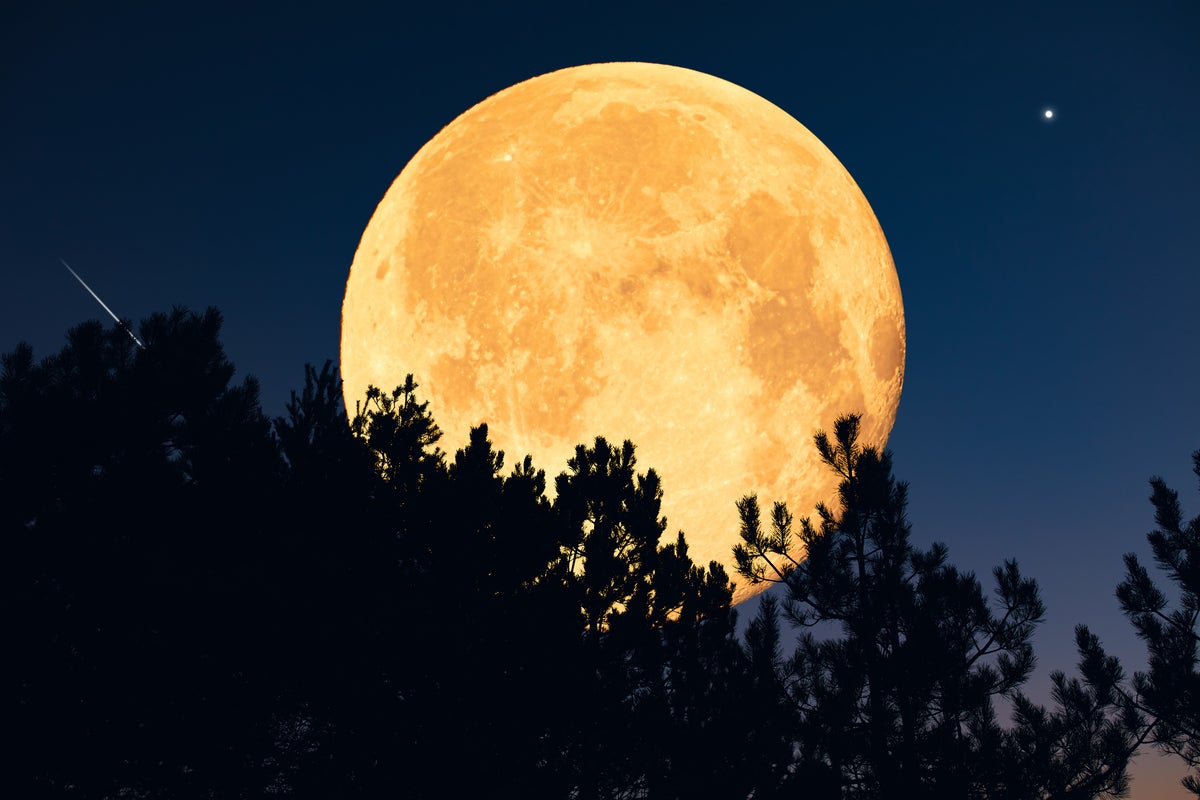Your support helps us to tell the story
From reproductive rights to climate change to Big Tech, The Independent is on the ground when the story is developing. Whether it’s investigating the financials of Elon Musk’s pro-Trump PAC or producing our latest documentary, ‘The A Word’, which shines a light on the American women fighting for reproductive rights, we know how important it is to parse out the facts from the messaging.
At such a critical moment in US history, we need reporters on the ground. Your donation allows us to keep sending journalists to speak to both sides of the story.
The Independent is trusted by Americans across the entire political spectrum. And unlike many other quality news outlets, we choose not to lock Americans out of our reporting and analysis with paywalls. We believe quality journalism should be available to everyone, paid for by those who can afford it.
Your support makes all the difference.Read more
October’s full moon will be the largest and brightest moon of the year, marking the first so-called supermoon since November 2024.
Taking place on Tuesday 7 October at 4.48am BST (11.48pm EDT on 6 October), the full moon will also have another unusual claim, as it will carry the title ‘Harvest Moon’.
The Harvest Moon name comes from farming traditions in the Northern Hemisphere, referring to the full moon that is closest to the autumnal equinox.
This falls on the 22 or 23 September each year, when the Sun crosses south over the celestial equator.
The full moon closest to this date usually occurs in September, with farmers traditionally relying on its light during the harvest season before the advent of artificial lighting.
This year, it will be the latest date that the Harvest Moon has appeared since 1987, when the full moon occurred on 7 October.
It will also be the first supermoon in 11 months, making it more visible in the night sky for casual observers.
First coined in 1979, the term supermoon refers to any new or full moon that occurs when it is within 90 per cent of its closest approach to Earth, known as its perigee.
A phenomenon called the ‘Moon Illusion’ will make the supermoon appear even bigger when it is close to the horizon, with some scientists theorising that the relative size of objects like trees and buildings in the distance can trick the eye into thinking the Moon is larger than normal.
“Photographs prove that the Moon is the same width near the horizon as when it’s high in the sky, but that’s not what we perceive with our eyes,” Nasa noted in a blog post.
“Thus it’s an illusion rooted in the way our brains process visual information. Even though we’ve been observing it for thousands of years, there’s still not a satisfying scientific explanation for exactly why we see it.”
The November and December full moons will also be classed as supermoons, offering a great opportunity for sky gazers to see the astronomical peculiarity.
The next full moon will coincide with another night sky spectacle in the UK, taking place on Guy Fawkes Day.
If the skies remain clear, the 5 November full moon, also known as the Beaver Moon, will appear alongside fireworks throughout the country.

